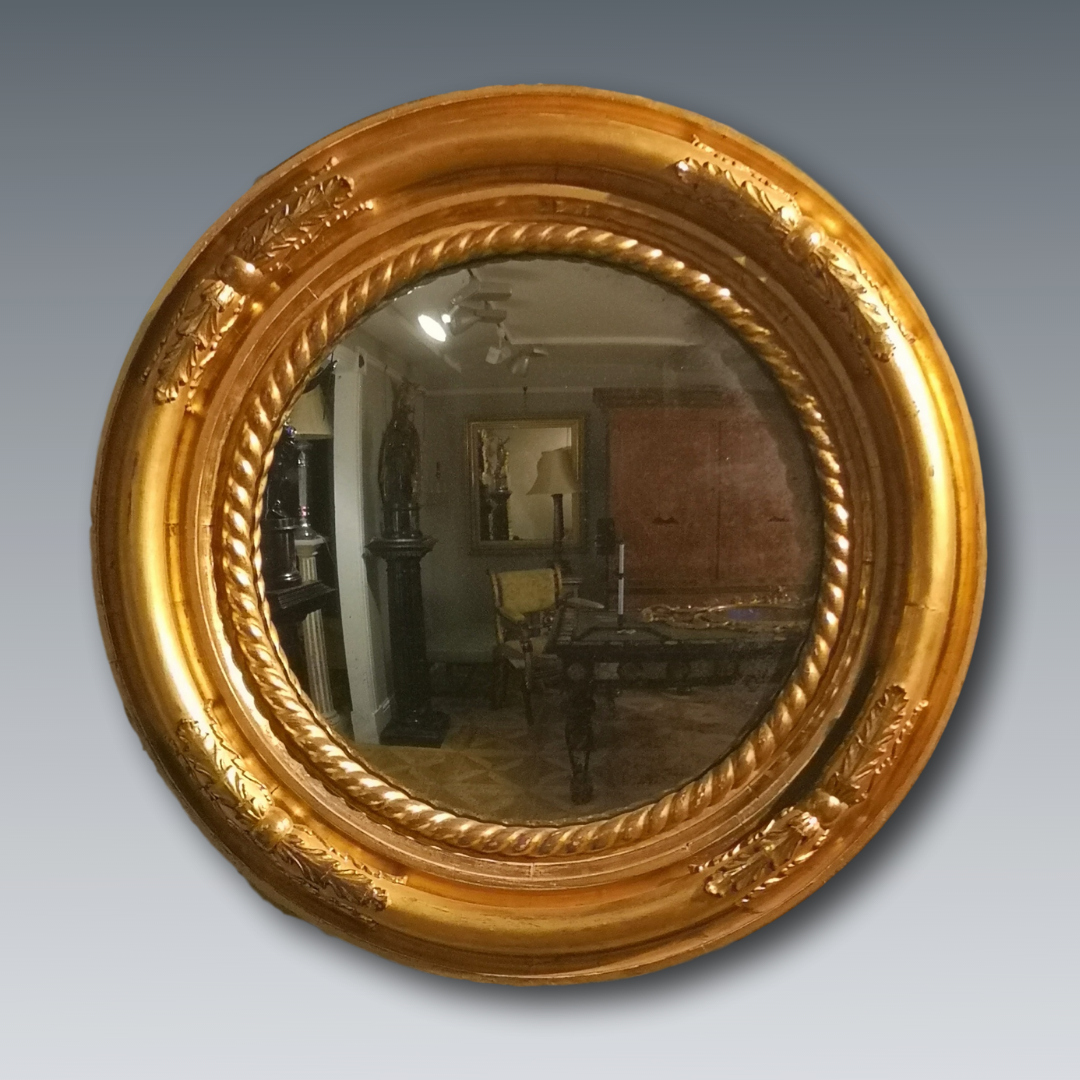A giltwood reliquary stand with later mirror, 18th Century
A giltwood reliquary stand with later mirror, 18th Century
An ornate and heavily carved giltwood reliquary stand with later mirror. Originally this ornately carved, moulded and gilded shrine stand would have held a painted image: perhaps the Virgin and Child or a particular saint. Although it is of quite elaborate architectural design, with twisted columns and an ornate pediment and frame, it was probably intended to be portable – it is mounted securely on its elegant base, easy for the pious traveller or pilgrim to place on a convenient chest or table.
Italian, 18th Century
Size: 47 inches (119.5 cm) high; 37 inches (94 cm) wide; 7.5 inches (19 cm) deep
Stock Number: HH20203
The use of reliquaries was an important part of Christian practice from at least the 4th Century. The actual relics were, allegedly, the bones of the saints and also items associated with Christ, such as a splinter of wood from the Crucifix. In the Middle Ages such relics were generally believed to have miraculous powers and were greatly venerated. Considered more valuable than precious stones and more … esteemed than gold, important medieval and earlier relics were enshrined in sumptuous cases and frames made of beautifully worked gold, silver, gems and enamel.
During the later Middle Ages, c.1400, relics were often housed in enclosed cases of rock crystal or glass mounted on a column above a base, enabling the relic to be displayed to the faithful. Reliquaries in the form of metalwork jewellery – perhaps a pendant or ring - also appeared around this time, housing tiny relics such as a piece of the Holy Thorn. Painted images on canvas or panel were displayed on framed stands or housed in decorative cabinets.
Reliquaries could be for both private and public use: devotional prayers behind closed doors or public exhibition or procession on a Holy Day or saint's feast day. 16th Century protestant reformers like Martin Luther opposed the use of relics as so many had no proof of historic authenticity, and they were also considered to encourage the cult of saints.
Nonetheless, the use and manufacture of reliquaries continues to this day, especially in Roman Catholic and Orthodox Christian countries.
See: Treasures of Heaven: Saints, Relics, and Devotion in Medieval Europe at the British Museum June 23 - October 2011








